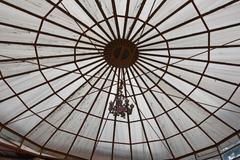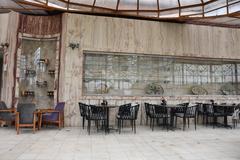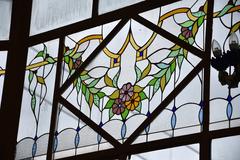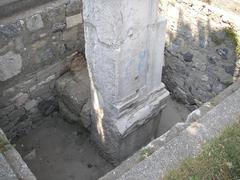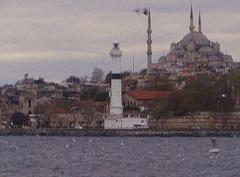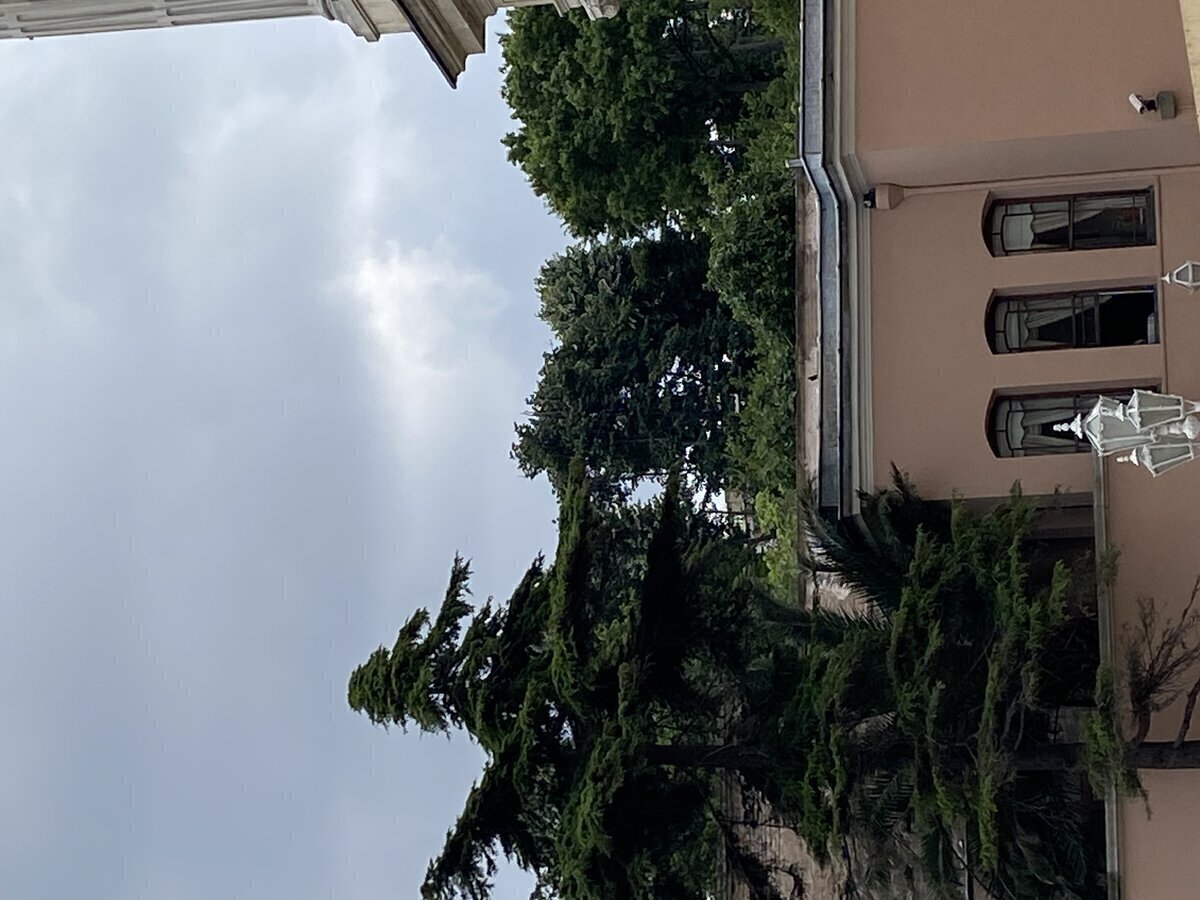
Visiting Beylerbeyi Palace Complex: Tickets, History, and More
Date: 17/07/2024
Introduction
Nestled on the picturesque shores of the Bosphorus in Istanbul, Beylerbeyi Palace is a magnificent testament to the opulent lifestyle and architectural prowess of the Ottoman Empire. Conceived by Sultan Abdulaziz and brought to life by the Balyan family of architects, the palace stands as a harmonious blend of Ottoman and European styles. This historical gem not only served as a summer residence for sultans but also played host to a multitude of foreign dignitaries, showcasing the empire’s wealth and grandeur (Visiting Beylerbeyi Palace - History, Tickets, and Travel Tips). As a meticulously preserved museum today, Beylerbeyi Palace offers visitors an immersive journey into the past, complete with opulent interiors, lush gardens, and fascinating historical anecdotes. This guide provides all the necessary information for planning your visit, including opening hours, ticket prices, travel tips, and nearby attractions, ensuring a memorable and enriching experience.
Table of Contents
- A Legacy in Stone and Marble - The History of Beylerbeyi Palace
- From Humble Abode to Imperial Residence (18th Century - Mid 19th Century)
- Sultan Abdulaziz - The Visionary Behind the Masterpiece (1861-1865)
- A Symbol of Modernity and Imperial Power
- Illustrious Guests and Imperial Sojourns (Late 19th Century)
- A Palace in Transition - The Twilight of an Empire (Early 20th Century)
- Beylerbeyi Palace Today - A Window into a Bygone Era
- Visitor Information
- Nearby Attractions
- Special Events and Guided Tours
- Photographic Spots
- FAQ
A Legacy in Stone and Marble - The History of Beylerbeyi Palace
Beylerbeyi Palace, nestled on the enchanting shores of the Bosphorus in Istanbul, is more than just a beautiful building; it’s a time capsule whispering tales of Ottoman opulence and a pivotal era in Turkish history.
From Humble Abode to Imperial Residence (18th Century - Mid 19th Century)
The story of Beylerbeyi Palace begins with simpler wooden structures gracing the same picturesque location. These early buildings, primarily used as imperial retreats and guest houses by various sultans, set the stage for the grand palace that would eventually rise.
Sultan Abdulaziz - The Visionary Behind the Masterpiece (1861-1865)
The palace as we see it today is largely the brainchild of Sultan Abdulaziz, who, upon ascending the throne in 1861, envisioned a summer residence and a place to host dignitaries with unparalleled grandeur. He commissioned the renowned Armenian architects, the Balyan family, already celebrated for their work on Dolmabahçe Palace and other Ottoman landmarks. The Balyans, masters of blending European styles with Ottoman aesthetics, crafted Beylerbeyi Palace between 1861 and 1865. The palace showcased a harmonious fusion of Baroque, Neoclassical, and traditional Ottoman architectural elements, reflecting the trend of Westernization sweeping through the Ottoman Empire at the time.
A Symbol of Modernity and Imperial Power
Beylerbeyi Palace, upon its completion, became a symbol of Sultan Abdulaziz’s reign and the modernization efforts of the late Ottoman Empire. The palace was equipped with cutting-edge technology for its time, including gas lighting, a central heating system, and even one of the first elevators in Turkey.
Illustrious Guests and Imperial Sojourns (Late 19th Century)
Beylerbeyi Palace quickly became a preferred summer residence for Sultan Abdulaziz and subsequent sultans. Its location offered respite from the city’s heat, and its opulent interiors provided a luxurious setting for court life. Beyond its role as a summer retreat, Beylerbeyi Palace played host to numerous significant events. Foreign dignitaries, including Empress Eugénie of France, King Edward VIII, and Shah Naser al-Din Shah Qajar of Persia, were received with lavish ceremonies, showcasing the empire’s wealth and hospitality.
A Palace in Transition - The Twilight of an Empire (Early 20th Century)
The turn of the 20th century brought about significant changes for the Ottoman Empire and, consequently, for Beylerbeyi Palace. Following the dethronement of Sultan Abdülhamid II in 1909, the palace served as his place of confinement until his death in 1918. This period marked a poignant shift in the palace’s narrative, transitioning from a symbol of imperial power to a place of exile.
Beylerbeyi Palace Today - A Window into a Bygone Era
Today, Beylerbeyi Palace stands as a meticulously preserved museum, offering visitors a glimpse into the lavish lifestyle and rich history of the Ottoman Empire. Its opulent interiors, adorned with Hereke carpets, Bohemian crystal chandeliers, and intricate murals, whisper tales of a bygone era. The palace’s gardens, stretching along the Bosphorus, provide a serene escape from the bustling city, inviting contemplation and reflection on the passage of time and the enduring legacy of the Ottoman Empire. Beylerbeyi Palace, with its captivating beauty and rich history, remains a must-visit destination in Istanbul, offering a unique and unforgettable journey through time.
Visitor Information
Opening Hours
Beylerbeyi Palace is open from 9:00 AM to 5:00 PM. It is closed on Mondays.
Ticket Prices
The entrance fee is 40 Turkish Lira for adults and 20 Turkish Lira for students. Children under 12 enter for free.
Travel Tips
Arrive early to avoid crowds, and consider taking a guided tour to fully appreciate the palace’s history and architecture.
Nearby Attractions
- Çamlıca Hill: Offers panoramic views of Istanbul and is a great spot for a picnic.
- Maiden’s Tower: Located on a small islet in the Bosphorus, this tower is steeped in legend and offers a unique perspective of the city.
- Kuzguncuk: A charming neighborhood known for its colorful houses and vibrant art scene.
Special Events and Guided Tours
Special Events
Beylerbeyi Palace occasionally hosts cultural events, art exhibitions, and concerts. Check the official website for upcoming events.
Guided Tours
Guided tours are available in multiple languages and provide in-depth information about the palace’s history, architecture, and significance. Booking in advance is recommended.
Photographic Spots
- Reception Hall: The grandeur of this hall, with its chandeliers and gilded decorations, makes for stunning photos.
- Gardens: Capture the beauty of the exotic plants, flowers, and pavilions with the Bosphorus as a backdrop.
- Sea Walls and Kiosks: These areas offer picturesque views and are perfect for capturing the essence of Beylerbeyi Palace.
FAQ
What are the visiting hours of Beylerbeyi Palace?
Beylerbeyi Palace is open from 9:00 AM to 5:00 PM, and it is closed on Mondays.
How much are tickets for Beylerbeyi Palace?
The entrance fee is 40 Turkish Lira for adults and 20 Turkish Lira for students. Children under 12 enter for free.
What are some tips for visiting Beylerbeyi Palace?
Opt for a guided tour, check the official website for the latest information, and dress respectfully.
Conclusion
Beylerbeyi Palace stands as a captivating window into the opulence and grandeur of the Ottoman Empire. From its architecturally stunning interiors to its serene gardens along the Bosphorus, every aspect of the palace invites contemplation of a bygone era. The meticulous preservation of the palace allows visitors to fully appreciate the historical significance and cultural heritage it embodies. Whether you are exploring the grand reception halls, enjoying the tranquil gardens, or learning about the illustrious guests who once graced its halls, Beylerbeyi Palace offers an unforgettable journey through time. The comprehensive visitor information, including travel tips and nearby attractions, ensures that your visit will be both enjoyable and enlightening. Plan your visit today and immerse yourself in the rich history and beauty of Beylerbeyi Palace (Visiting Beylerbeyi Palace - History, Tickets, and Travel Tips).
References
- Visiting Beylerbeyi Palace - History, Tickets, and Travel Tips, 2024, source link
- Visiting Beylerbeyi Palace - Hours, Tickets, and Key Attractions in Istanbul, 2024, source link
- Visiting Beylerbeyi Palace - Hours, Tickets, and Travel Tips, 2024, source link

